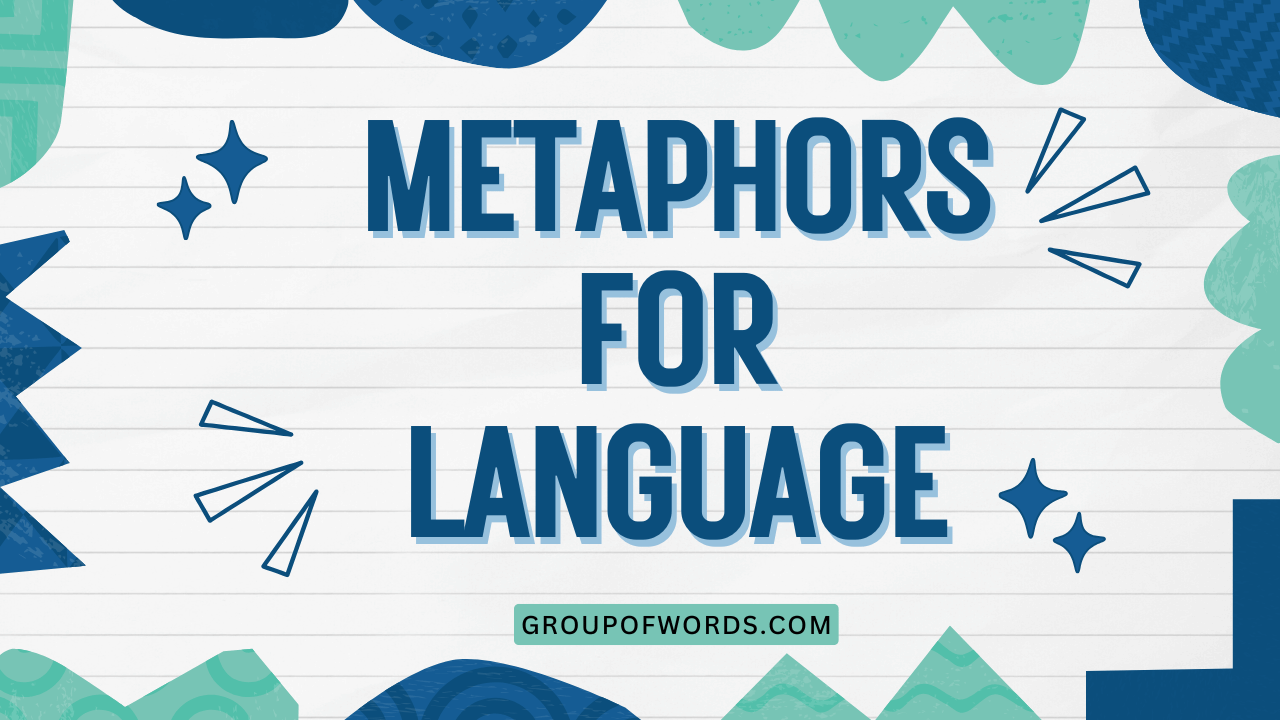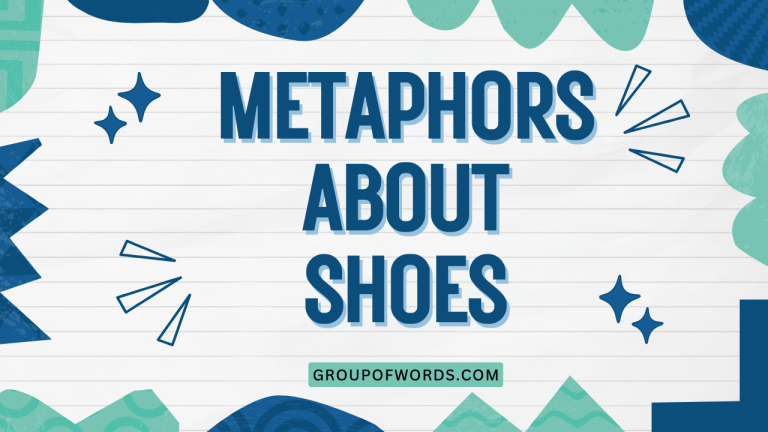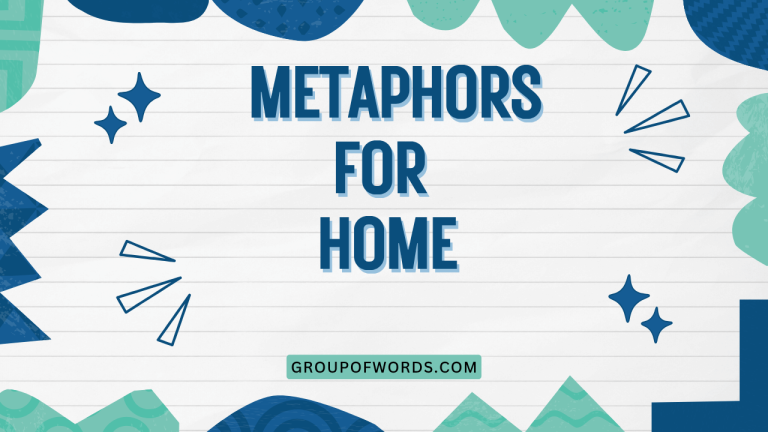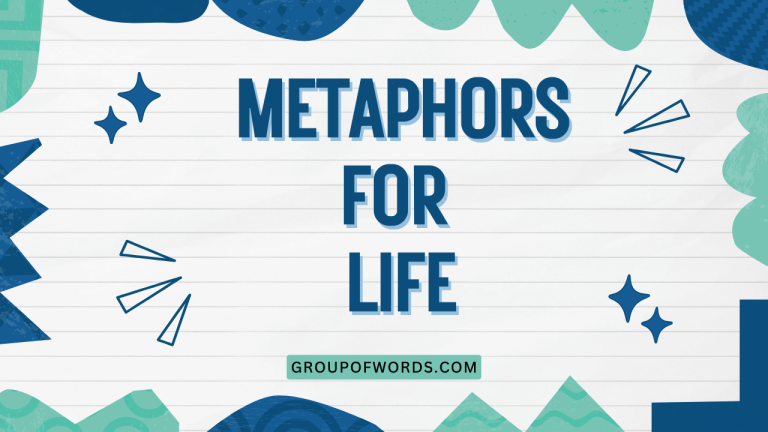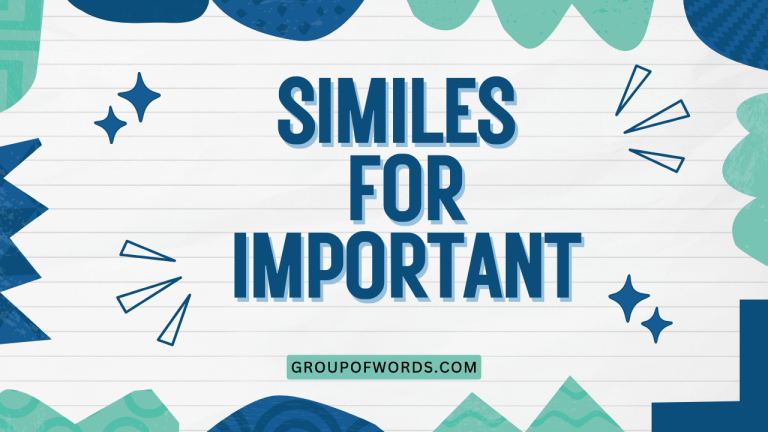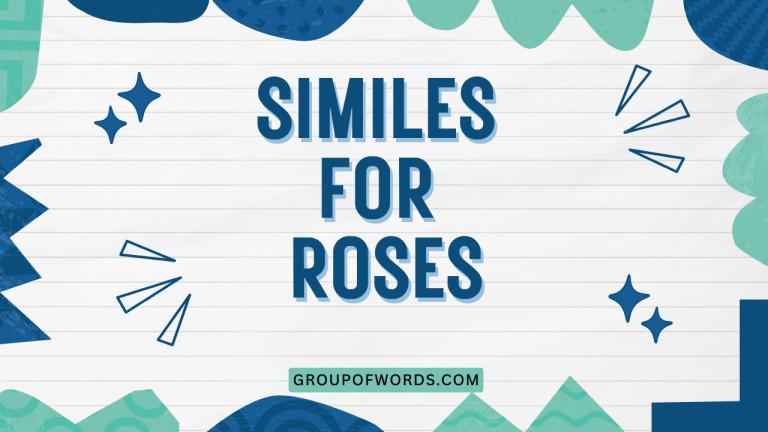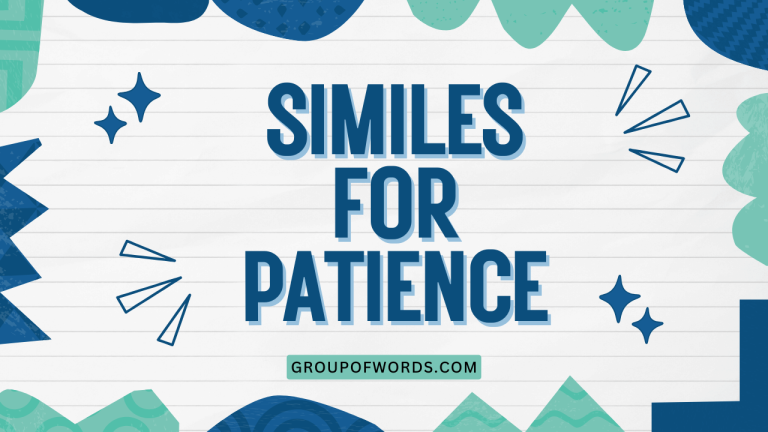Language as a River: Exploring Metaphors for Communication
Understanding how we use metaphors to describe language can profoundly impact our grasp of communication itself. By conceptualizing language through different metaphorical lenses, we gain new insights into its complexities and nuances.
This article delves into the most common and compelling metaphors for language, exploring their implications and providing numerous examples to enhance comprehension. Whether you’re an English language learner, a linguistics enthusiast, or simply someone interested in the power of words, this comprehensive guide will illuminate the fascinating world of language metaphors.
Table of Contents
- Introduction
- Definition: Metaphors for Language
- Structural Breakdown of Language Metaphors
- Types and Categories of Language Metaphors
- Examples of Language Metaphors
- Usage Rules for Language Metaphors
- Common Mistakes with Language Metaphors
- Practice Exercises
- Advanced Topics in Language Metaphors
- Frequently Asked Questions
- Conclusion
Definition: Metaphors for Language
Metaphors for language involve using figurative language to describe various aspects of communication, including speaking, writing, understanding, and the overall nature of language itself. These metaphors help us conceptualize abstract ideas by relating them to more concrete and familiar concepts.
By framing language through metaphors, we can better understand its function, structure, and impact on human interaction. These metaphors are not merely decorative; they shape our understanding and influence how we approach communication challenges.
The function of language metaphors is multifaceted. They serve as cognitive tools, allowing us to simplify complex linguistic processes.
They also influence our attitudes towards language, shaping our perceptions of its power, limitations, and potential. The contexts in which these metaphors are used vary widely, ranging from everyday conversations to academic discussions about linguistics and communication theory.
Examining these metaphors provides valuable insights into how we perceive and interact with language.
Structural Breakdown of Language Metaphors
The structure of a language metaphor typically involves two key elements: the target domain (language) and the source domain (the concept used to describe language). The source domain provides a framework for understanding the target domain. For example, in the metaphor “language is a river,” the target domain is language, and the source domain is a river. The characteristics of a river (flow, currents, tributaries) are then used to describe aspects of language.
The mapping between the source and target domains involves identifying similarities and analogies. These mappings can be explicit or implicit.
For instance, “the stream of consciousness” explicitly links consciousness (a target domain) to a stream (a source domain). Implicit mappings are often more subtle, requiring deeper analysis to uncover the underlying metaphorical structure.
Understanding this structural framework is crucial for interpreting and analyzing language metaphors effectively. The effectiveness of a metaphor depends on the strength and relevance of the mappings between the source and target domains.
Types and Categories of Language Metaphors
Language metaphors can be categorized based on the source domain they draw upon. Here are some common categories:
Language as a Conduit
This metaphor views language as a channel or pipeline through which thoughts and ideas are transmitted from one person to another. It emphasizes the transfer of information and the clarity of communication.
The speaker “encodes” their message, sends it through the conduit, and the listener “decodes” it. Problems in communication are often attributed to noise or blockages in the conduit.
Language as a Tool
This metaphor portrays language as a tool used to achieve specific goals. Speakers use language to construct meaning, persuade others, or accomplish tasks.
The effectiveness of language depends on the skill of the user and the appropriateness of the tool for the job. Grammar and vocabulary are seen as the components of the tool, enabling precise and effective communication.
Language as a Game
This metaphor highlights the rule-governed nature of language. Speakers and listeners engage in a game of communication, following certain rules and conventions to achieve mutual understanding.
The success of the game depends on all participants adhering to the rules. Elements like turn-taking, strategic responses, and understanding the “rules of engagement” are key components.
Language as a Living Organism
This metaphor views language as an evolving entity that grows, changes, and adapts over time. Languages are born, they develop, and they can even die.
New words and phrases emerge, while others become obsolete. The health and vitality of a language depend on its usage and adaptation to changing social and cultural contexts.
Language as a Landscape
This metaphor represents language as a territory to be explored, with different regions, paths, and landmarks. Speakers navigate this landscape to convey their message, encountering potential obstacles and discovering new perspectives.
The richness and diversity of language are emphasized, with different dialects and styles representing different regions of the landscape.
Language as a Barrier
This metaphor highlights the potential for language to create divisions and misunderstandings between people. Language differences can act as barriers to communication, hindering mutual understanding and fostering conflict.
Overcoming these barriers requires effort, translation, and a willingness to bridge the linguistic divide.
Examples of Language Metaphors
The following tables provide examples of language metaphors categorized by type. Each example illustrates how a specific source domain is used to conceptualize language.
Table 1 presents examples of language as a conduit. This metaphor emphasizes the transfer of information and the clarity of communication.
The speaker “encodes” their message, sends it through the conduit, and the listener “decodes” it.
| Metaphor | Example Sentence | Explanation |
|---|---|---|
| Encoding/Decoding | “I struggled to encode my feelings into words.” | Expressing feelings is framed as converting them into a coded message. |
| Transmitting Information | “The news transmitted a sense of urgency.” | News is portrayed as a signal being sent from one point to another. |
| Channel of Communication | “Social media has become a primary channel of communication.” | Social media is seen as a pathway for information to flow. |
| Passing on Information | “She passed on the information to her colleagues.” | Information is treated as a physical object being handed over. |
| Getting the Message Across | “He tried to get his message across to the audience.” | Communication is viewed as a journey where the message needs to reach its destination. |
| Clear Communication | “The speaker presented his ideas with crystalline clarity.” | Clarity is likened to a transparent substance, allowing unobstructed viewing. |
| Obstructed Communication | “There was too much noise in the signal, making it hard to understand.” | Noise interferes with the clarity of communication, like static on a radio. |
| Bottleneck in Communication | “The bureaucracy created a bottleneck in the information flow.” | A bottleneck restricts the flow of information, similar to a narrow passage restricting the flow of liquid. |
| Filling with Information | “The report filled us with important information.” | Information is treated as a substance that can fill a container. |
| Empty Words | “His promises were just empty words.” | Words lacking substance or sincerity are compared to an empty container. |
| Conveying Meaning | “Her expression conveyed a deep sense of sorrow.” | Meaning is transported from one person to another. |
| Information Overload | “I was flooded with information after the conference.” | Too much information is like being overwhelmed by a flood. |
| Message Received | “I got the message loud and clear.” | Understanding is likened to receiving a physical object. |
| Communication Breakdown | “There was a complete breakdown in communication between departments.” | Communication failing is compared to a machine breaking down. |
| Delivering a Message | “She delivered a powerful message about climate change.” | A message is treated as an object being delivered from one place to another. |
| Garbled Message | “The message was so garbled that no one understood it.” | A poorly communicated message is like something that has been distorted or mixed up. |
| Spreading the Word | “They spread the word about the upcoming event.” | Information is disseminated like seeds scattered across a field. |
| The Word on the Street | “The word on the street is that the company is downsizing.” | Information is seen as circulating among people in a community. |
| Broadcasting Information | “The company broadcast the news to all employees.” | Information is sent out to a wide audience, like a radio or television signal. |
| Whispering Secrets | “They were whispering secrets in the corner.” | Secrets are communicated quietly and discreetly, like whispered words. |
| Information Leak | “There was an information leak from the government agency.” | Confidential information escapes its secure container. |
| Plugged In | “He is always plugged in to the latest news.” | Being connected to information sources is like being connected to an electrical outlet. |
| Out of Touch | “She is out of touch with current events.” | Lacking awareness of current information is like being disconnected. |
| Message Lost | “The true meaning of the poem was lost in translation.” | The intended message disappears during the process of translation. |
Table 2 provides examples of language as a tool. This metaphor portrays language as an instrument used to achieve specific goals.
Speakers use language to construct meaning, persuade others, or accomplish tasks.
| Metaphor | Example Sentence | Explanation |
|---|---|---|
| Crafting an Argument | “She carefully crafted her argument to persuade the jury.” | Argumentation is likened to the skillful creation of an object. |
| Honing Language Skills | “He spent years honing his language skills.” | Improving language skills is like sharpening a blade. |
| Building a Sentence | “We are building a sentence using specific words.” | Constructing a sentence is like assembling a structure. |
| Sharpening Vocabulary | “Reading widely helps to sharpen your vocabulary.” | Enriching vocabulary is compared to making a tool more effective. |
| Using Words as Weapons | “He used words as weapons to attack his opponent.” | Language is employed to harm or defeat someone. |
| Polishing Writing | “She spent hours polishing her writing to perfection.” | Refining writing is like making a surface smooth and shiny. |
| Constructing Meaning | “We construct meaning through our interactions with others.” | Meaning is built or assembled through communication. |
| Manipulating Language | “Politicians often manipulate language to sway public opinion.” | Language is handled skillfully and sometimes deceptively to achieve a purpose. |
| Wielding Influence | “The CEO wielded significant influence through her speeches.” | Influence is exerted through the skillful use of language. |
| Employing Rhetoric | “The lawyer employed rhetoric to win the case.” | Rhetoric is utilized as a tool to persuade and convince. |
| Instrument of Change | “Language can be a powerful instrument of change.” | Language can be used as a means to bring about transformation. |
| Tool for Understanding | “Grammar is a tool for understanding how language works.” | Grammar helps us comprehend the structure and function of language. |
| Crafting a Narrative | “The author crafted a compelling narrative that captivated readers.” | Creating a story is like carefully constructing a work of art. |
| Sculpting a Speech | “The orator sculpted his speech with precision and grace.” | Giving a speech is like shaping a piece of art from raw material. |
| Hacking Language | “Programmers often talk about hacking language to achieve creative effects.” | Using language in unconventional or innovative ways is like hacking into a system. |
| Weaponizing Words | “Online trolls often weaponize words to harass and intimidate others.” | Using language aggressively to cause harm is like using a weapon. |
| Leveraging Language | “Businesses leverage language to build their brand and connect with customers.” | Using language strategically to gain an advantage is like using leverage. |
| Employing Jargon | “The scientists employed jargon to communicate complex ideas efficiently.” | Using specialized vocabulary is like using a specific tool for a particular task. |
| Utilizing Syntax | “The poet utilized syntax to create rhythm and emphasis.” | Using sentence structure to achieve artistic effects is like using a tool to shape a design. |
| Constructing Arguments | “The debaters constructed their arguments with logic and evidence.” | Building a case is like constructing a building with solid materials. |
| Fashioning Phrases | “The songwriter fashioned phrases that resonated with the audience.” | Creating memorable expressions is like crafting a beautiful object. |
| Orchestrating Dialogue | “The playwright orchestrated the dialogue to reveal the characters’ inner thoughts.” | Arranging conversations is like conducting an orchestra to create a harmonious sound. |
| Forging Connections | “Storytelling forges connections between people and cultures.” | Creating bonds through narratives is like shaping metal to form a link. |
| Molding Public Opinion | “Politicians often try to mold public opinion through their speeches.” | Influencing people’s beliefs is like shaping clay into a desired form. |
Table 3 showcases language as a game. This metaphor highlights the rule-governed nature of language.
Speakers and listeners engage in a game of communication, following certain rules and conventions to achieve mutual understanding.
| Metaphor | Example Sentence | Explanation |
|---|---|---|
| Playing with Words | “The comedian was playing with words to create humor.” | Using language creatively and playfully is like engaging in a game. |
| Rules of Grammar | “You need to follow the rules of grammar to write correctly.” | Grammar is seen as a set of rules governing the language game. |
| Turn-Taking in Conversation | “Effective communication involves turn-taking in conversation.” | Conversation is structured like a game with designated turns. |
| Strategic Communication | “The negotiator used strategic communication to reach an agreement.” | Communication is employed as a strategy to achieve a specific goal. |
| Winning an Argument | “He won the argument with his persuasive reasoning.” | Successfully defending a position is like winning a game. |
| The Name of the Game | “In politics, persuasion is the name of the game.” | Persuasion is the most important aspect of political communication. |
| Fair Play in Debate | “Fair play in debate requires respecting your opponent.” | Debate is governed by rules of fairness and respect. |
| Raising the Stakes | “The company raised the stakes by launching a new marketing campaign.” | Increasing the intensity or risk in a situation is like raising the stakes in a game. |
| Level Playing Field | “We need to create a level playing field in the job market.” | Ensuring equal opportunities is like creating fair conditions for a game. |
| Moving the Goalposts | “The company kept moving the goalposts, making it impossible to succeed.” | Changing the rules or expectations is like moving the goalposts in a game. |
| Playing by the Rules | “It’s important to play by the rules in any competition.” | Adhering to the established guidelines is essential for fairness. |
| Checkmate | “With that final argument, he delivered a checkmate to his opponent.” | A decisive victory is likened to the winning move in chess. |
| Bluffing | “He was just bluffing when he claimed to have inside information.” | Deceiving others with false claims is like bluffing in poker. |
| Calling Someone’s Bluff | “The journalist called the politician’s bluff by revealing the truth.” | Exposing someone’s deception is like calling their bluff in a card game. |
| Game Changer | “The new technology was a game changer for the industry.” | A significant innovation is like something that fundamentally alters a game. |
| Playing the Field | “She was playing the field, dating multiple people at once.” | Exploring different options is like participating in various activities simultaneously. |
| Raising the Bar | “The company raised the bar for customer service.” | Setting a higher standard is like increasing the difficulty in a game. |
| Stepping Up the Game | “The team needed to step up their game to win the championship.” | Improving performance is like enhancing one’s skills in a game. |
| Winning Strategy | “His winning strategy was to focus on the key issues.” | An effective plan is like a successful tactic in a game. |
| Level Playing Field | “We need to create a level playing field in education so that all students have equal opportunities.” | Ensuring fairness and equality is like providing equal conditions for a game. |
| Moving the Goalposts | “The government kept moving the goalposts, making it difficult for businesses to comply with regulations.” | Changing the rules or expectations is like altering the objectives in a game. |
| Playing by Ear | “We didn’t have a detailed plan, so we had to play it by ear.” | Improvising and adapting to changing circumstances is like playing music without written notes. |
| The Ball Is in Your Court | “I’ve made my proposal; now the ball is in your court.” | The responsibility for the next action lies with the other person. |
| Playing Hardball | “The negotiators were playing hardball, refusing to compromise.” | Using aggressive tactics is like engaging in a tough, uncompromising game. |
Usage Rules for Language Metaphors
Using language metaphors effectively requires sensitivity to context and audience. Overusing metaphors can lead to confusion or weaken the impact of your message.
It’s crucial to ensure that the metaphor is appropriate for the subject matter and that the audience understands the connection between the source and target domains. Avoid mixed metaphors, where elements from different source domains are combined in a way that creates a nonsensical or confusing image.
For instance, “He’s a shark in the water, but also a sitting duck” combines contradictory images.
Furthermore, be mindful of the cultural connotations of metaphors. Some metaphors may have different meanings or associations in different cultures.
Choosing metaphors that resonate with your target audience is essential for effective communication. Consider the potential for misinterpretation and strive for clarity and relevance in your metaphorical language.
Common Mistakes with Language Metaphors
One common mistake is using clichéd metaphors that have lost their impact through overuse. For example, saying someone is “as busy as a bee” is a tired metaphor that lacks originality. Another mistake is using mixed metaphors, which create confusing and illogical images. Here are some examples of correct versus incorrect usage:
| Incorrect | Correct | Explanation |
|---|---|---|
| “He navigated the sea of bureaucracy with a fine-toothed comb.” | “He navigated the sea of bureaucracy with patience and skill.” | Mixing “sea” and “fine-toothed comb” creates a confusing image. |
| “She’s burning the candle at both ends and is a diamond in the rough.” | “She’s burning the candle at both ends and needs to rest.” | Combining “burning the candle” and “diamond in the rough” is illogical. |
| “The project is a rollercoaster ride, but we need to stay the course.” | “The project is a rollercoaster ride, but we need to hold on tight.” | “Rollercoaster ride” and “stay the course” create a mixed metaphor. |
| “He’s a wolf in sheep’s clothing, but also an open book.” | “He’s a wolf in sheep’s clothing, deceiving everyone.” | “Wolf in sheep’s clothing” and “open book” are contradictory. |
| “The company is sailing into uncharted waters, but they have deep roots.” | “The company is sailing into uncharted waters, facing uncertainty.” | “Sailing into uncharted waters” and “deep roots” create a mixed metaphor. |
Practice Exercises
Test your understanding of language metaphors with these exercises. Identify the type of metaphor used in each sentence and explain its meaning.
Exercise 1: Identifying Metaphor Types
| Question | Answer |
|---|---|
| 1. “Her words cut like a knife.” | Language as a weapon: Words can inflict pain or damage. |
| 2. “The information highway is filled with misinformation.” | Language as a conduit: Information is transmitted along a pathway. |
| 3. “They are constructing a new theory of linguistics.” | Language as a tool: Theories are built or assembled. |
| 4. “He played with the language to create a humorous effect.” | Language as a game: Language is used playfully and creatively. |
| 5. “The language is evolving rapidly due to technology.” | Language as a living organism: Language changes and adapts over time. |
| 6. “Navigating the complexities of grammar can be challenging.” | Language as a landscape: Grammar is a territory to be explored. |
| 7. “Misunderstandings can create a barrier between people.” | Language as a barrier: Language differences can hinder communication. |
| 8. “She decoded the hidden message in the poem.” | Language as a conduit: Messages are encoded and decoded. |
| 9. “The politician wielded language to sway the crowd.” | Language as a tool: Language is used to exert influence. |
| 10. “The debate followed strict rules of engagement.” | Language as a game: Communication is governed by rules and conventions. |
Exercise 2: Rewriting Sentences with Metaphors
| Question | Answer |
|---|---|
| 1. Rewrite: “The speaker was very persuasive.” | “The speaker’s words wove a spell over the audience.” |
| 2. Rewrite: “Understanding grammar is essential for clear communication.” | “Grammar is the key that unlocks clear communication.” |
| 3. Rewrite: “New words are constantly being added to the language.” | “The language is constantly sprouting new words.” |
| 4. Rewrite: “The discussion was very confusing and disorganized.” | “The discussion was a tangled web of ideas.” |
| 5. Rewrite: “The author skillfully crafted a story that captivated readers.” | “The author painted a vivid picture with words, captivating readers.” |
| 6. Rewrite: “The journalist exposed the politician’s lies.” | “The journalist shone a light on the politician’s lies.” |
| 7. Rewrite: “The new technology transformed the way we communicate.” | “The new technology revolutionized the communication landscape.” |
| 8. Rewrite: “The diplomat used careful language to avoid causing offense.” | “The diplomat walked a tightrope with her words, avoiding offense.” |
| 9. Rewrite: “The teacher helped the students understand the complex grammar rules.” | “The teacher guided the students through the labyrinth of grammar rules.” |
| 10. Rewrite: “The writer’s words had a powerful impact on the readers.” | “The writer’s words struck a chord with the readers.” |
Advanced Topics in Language Metaphors
For advanced learners, exploring the cognitive and cultural dimensions of language metaphors can provide deeper insights. Cognitive linguistics examines how metaphors shape our thought processes and influence our understanding of the world.
Cultural linguistics explores how metaphors vary across different cultures and reflect unique cultural values and beliefs. Analyzing the historical evolution of language metaphors can also reveal changing attitudes towards language and communication.
Furthermore, studying the use of metaphors in specific contexts, such as political discourse, advertising, or scientific communication, can highlight their persuasive power and rhetorical function. Investigating the role of metaphors in shaping social and cultural identities can also provide valuable insights into the complex relationship between language and society.
Consider the work of linguists like George Lakoff and Mark Johnson, whose book “Metaphors We Live By” is a seminal text in the field.
Frequently Asked Questions
Here are some frequently asked questions about metaphors for language:
- What is the difference between a metaphor and a simile?
A metaphor directly equates two unlike things, while a simile uses “like” or “as” to make a comparison. For example, “language is a river” is a metaphor, while “language is like a river” is a simile. Similes are generally considered less forceful than metaphors.
- Why are metaphors important in language?
Metaphors help us understand abstract concepts by relating them to more concrete and familiar ideas. They also add color and vividness to our language, making it more engaging and memorable. Metaphors shape our thinking and influence how we perceive the world.
- How can I improve my use of metaphors?
Read widely, pay attention to how metaphors are used in different contexts, and practice using them in your own writing and speaking. Be mindful of the connotations of your metaphors and ensure they are appropriate for your audience. Avoid clichéd and mixed metaphors.
- What are some common pitfalls to avoid when using metaphors?
Avoid using clichéd metaphors, mixed metaphors, and metaphors that are culturally insensitive. Ensure that your metaphors are clear, relevant, and appropriate for the context and audience. Overusing metaphors can also weaken their impact.
- Can metaphors be harmful?
Yes, metaphors can be harmful if they perpetuate stereotypes, promote misinformation, or create negative associations. It’s important to be mindful of the potential impact of your metaphors and choose them carefully.
- How do metaphors influence our understanding of abstract concepts?
Metaphors provide a framework for understanding abstract concepts by relating them to more concrete experiences. They allow us to transfer knowledge from one domain to another, making complex ideas more accessible and understandable. This process is known as conceptual metaphor theory.
- Are metaphors universal across all languages and cultures?
While some metaphors are universal, many are culturally specific. Different cultures may use different source domains to conceptualize the same target domain. Understanding these cultural variations is essential for effective cross-cultural communication.
- How can I analyze the metaphors used in a text or speech?
Identify the source and target domains of the metaphors. Analyze the mappings between the two domains and consider the implications of these mappings. Pay attention to the context in which the metaphors are used and their potential impact on the audience. Look for recurring patterns and themes in the metaphorical language.
Conclusion
Exploring metaphors for language provides valuable insights into how we perceive and understand communication. By recognizing the underlying metaphors in our language, we can become more effective communicators and critical thinkers.
Understanding the different types of language metaphors, avoiding common mistakes, and practicing their usage are key steps in mastering this important aspect of language. Continue to explore the fascinating world of language metaphors and discover new ways to enhance your understanding of communication.
Remember that language is a dynamic and evolving system, and our understanding of it is constantly shaped by the metaphors we use. By embracing a metaphorical mindset, we can unlock new perspectives and enrich our communication experiences.
Keep exploring, keep learning, and keep communicating!
